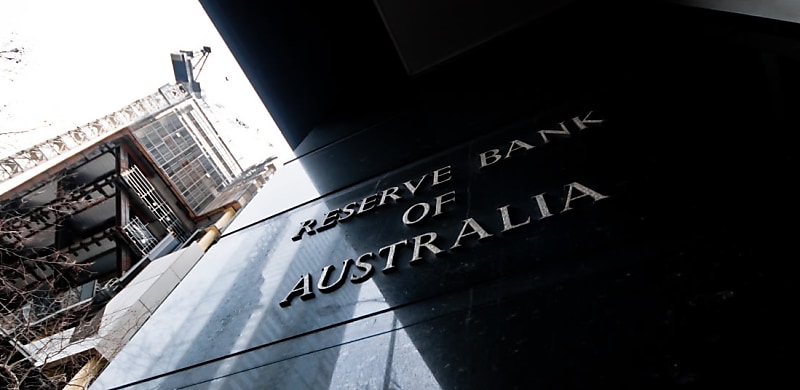
With many businesses’ net profit margins failing to return to pre-pandemic levels by March 2022, indebted SMEs have been bearing the brunt of rate rises, according to the central bank.
The Reserve Bank of Australia’s (RBA) October 2022 Financial Stability Review has revealed that — while demand has generally been strong for many businesses — inflation pressures, labour shortages, and supply disruptions have dented profitability, particularly for businesses with limited ability to raise their prices to offset higher input costs.
The RBA noted that this has been particularly pronounced in the residential construction industry due to the prevalence of fixed-price contracts, and has contributed to an uptick in financial stress and insolvencies.
The latest available firm-level data provided by the RBA showed that many businesses’ net profit margins were yet to fully recover to pre-pandemic levels by March 2022.
For the median company, the net profit margin was around 2.5 percentage points lower than before the pandemic, although the levels varied by industry.
While they remained relatively low for many firms in construction, transport, and education industries, profit margins had returned to pre-pandemic levels for firms in the retail and accommodation and food services industries by the March quarter.
Unprofitable small and medium-sized enterprises (SMEs) appear to be particularly vulnerable as lower profitability reduces debt-servicing capacity, intensified by the effects of recent increases in variable business lending rates for some indebted firms, according to the RBA.
“Currently, unprofitable SMEs appear particularly exposed, as they tend to be more indebted than profitable SMEs — and are therefore already more vulnerable to rising interest rates,” the RBA stated in the review.
“Larger firms are typically more indebted than smaller firms, but they also tend to have a higher capacity to service debt because they have more diversified and stable incomes. Overall, large businesses tend to have similar leverage regardless of whether they are currently profitable or unprofitable.”
Coupled with this, average cash balances for SMEs are also typically lower relative to their size and have been declining over 2022, again suggesting that these businesses will be more vulnerable to weak profit outcomes in the period ahead, the RBA flagged.
“Firms with weak or negative operating profits will also need to rely more heavily on cash reserves to support their operations or service debts,” the RBA said.
“While aggregate cash holdings were around 25 per cent higher in the June quarter than before the pandemic, data on businesses’ bank deposits indicate that this disproportionately reflects increased cash balances for larger businesses.”
Business insolvencies have risen further (driven largely by developments in the construction industry) but have drifted higher across a range of other industries since September 2021.
Nevertheless, insolvencies have remained slightly below pre-pandemic levels as government assistance during the peak of the COVID-19 pandemic and cash buffers accumulated cushioned businesses, while many of them benefited from the strong economic recovery.
As such, the non-performing share of banks’ business loans have remained very low, the RBA highlighted.
However, it has predicted that more insolvencies are likely in the period ahead as economic activity slows and vulnerable businesses draw down further on their cash reserves (particularly those with high levels of debt or those continuing to be impacted by pandemic-related disruptions).
Alongside this, the resumption of enforcement activities by the Australian Taxation Office (ATO) on unpaid tax (which was paused during the pandemic) is likely to trigger more businesses to begin formal insolvency procedures, particularly those businesses that are unable to pay their debts, thus contributing to higher insolvencies, the RBA said.
“Nonetheless, broader financial stability risks from rising insolvencies appear low,” it added.
“A material deterioration in economic conditions would likely be required for this assessment to change.”
The data has come ahead of The Adviser’s SME Broker Bootcamp, where speakers will outline why now is an opportune time for mortgage brokers to diversify their brokerages and service SME clients as they face mounting challenges and economic headwinds in their businesses.
Brokers will hear about the financial gains and risk/reward payout of diversifying and how long it could take, the skills required to successfully tap into SME lending, and the key to producing quality lending submissions to meet clients’ funding needs.
The Adviser’s SME Broker Bootcamp 2022 will delve deeper into the challenges facing businesses in the current economic environment, while brokers who have implemented diversification strategies into their business will share practical advice on how others could become a trusted adviser for SME clients.
The bootcamp will be held in the following locations:
- Thursday, 17 November: Waters Edge, Portside Wharf, Brisbane
- Tuesday, 22 November: Parkroyal, Parramatta, Sydney
- Thursday, 24 November: Crown Promenade, Southbank, Melbourne
Click here to register for free and make sure you don’t miss out!
For more information, including agenda and speakers, click here.
[Related: Borrowing capacity ‘most important’ factor for home buyers: NAB]
 Login
Login











JOIN THE DISCUSSION